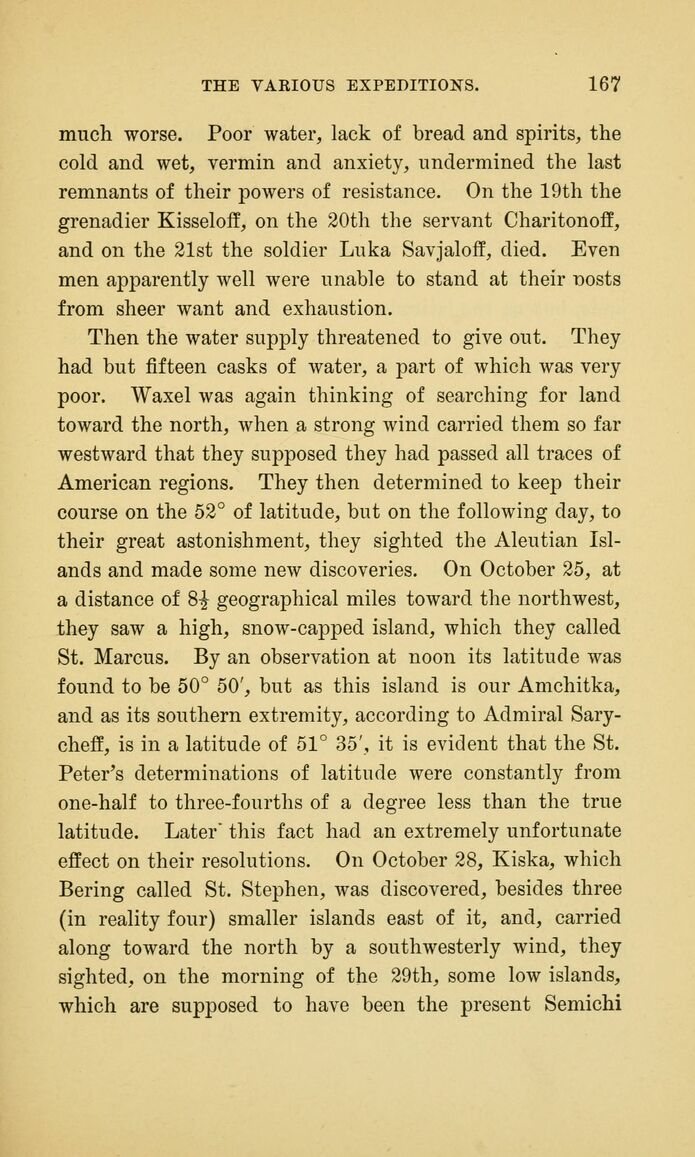
Full resolution (JPEG) - On this page / på denna sida - Chapter XVIII.

<< prev. page << föreg. sida << >> nästa sida >> next page >>
Below is the raw OCR text
from the above scanned image.
Do you see an error? Proofread the page now!
Här nedan syns maskintolkade texten från faksimilbilden ovan.
Ser du något fel? Korrekturläs sidan nu!
This page has been proofread at least once.
(diff)
(history)
Denna sida har korrekturlästs minst en gång.
(skillnad)
(historik)
much worse. Poor water, lack of bread and spirits, the
cold and wet, vermin and anxiety, undermined the last
remnants of their powers of resistance. On the 19th the
grenadier Kisseloff, on the 20th the servant Charitonoff,
and on the 21st the soldier Luka Savjaloff, died. Even
men apparently well were unable to stand at their posts
from sheer want and exhaustion.
Then the water supply threatened to give out. They
had but fifteen casks of water, a part of which was very
poor. Waxel was again thinking of searching for land
toward the north, when a strong wind carried them so far
westward that they supposed they had passed all traces of
American regions. They then determined to keep their
course on the 52° of latitude, but on the following day, to
their great astonishment, they sighted the Aleutian
Islands and made some new discoveries. On October 25, at
a distance of 8½ geographical miles toward the northwest,
they saw a high, snow-capped island, which they called
St. Marcus. By an observation at noon its latitude was
found to be 50° 50′, but as this island is our Amchitka,
and as its southern extremity, according to Admiral
Sarycheff, is in a latitude of 51° 35′, it is evident that the St.
Peter’s determinations of latitude were constantly from
one-half to three-fourths of a degree less than the true
latitude. Later this fact had an extremely unfortunate
effect on their resolutions. On October 28, Kiska, which
Bering called St. Stephen, was discovered, besides three
(in reality four) smaller islands east of it, and, carried
along toward the north by a southwesterly wind, they
sighted, on the morning of the 29th, some low islands,
which are supposed to have been the present Semichi
<< prev. page << föreg. sida << >> nästa sida >> next page >>